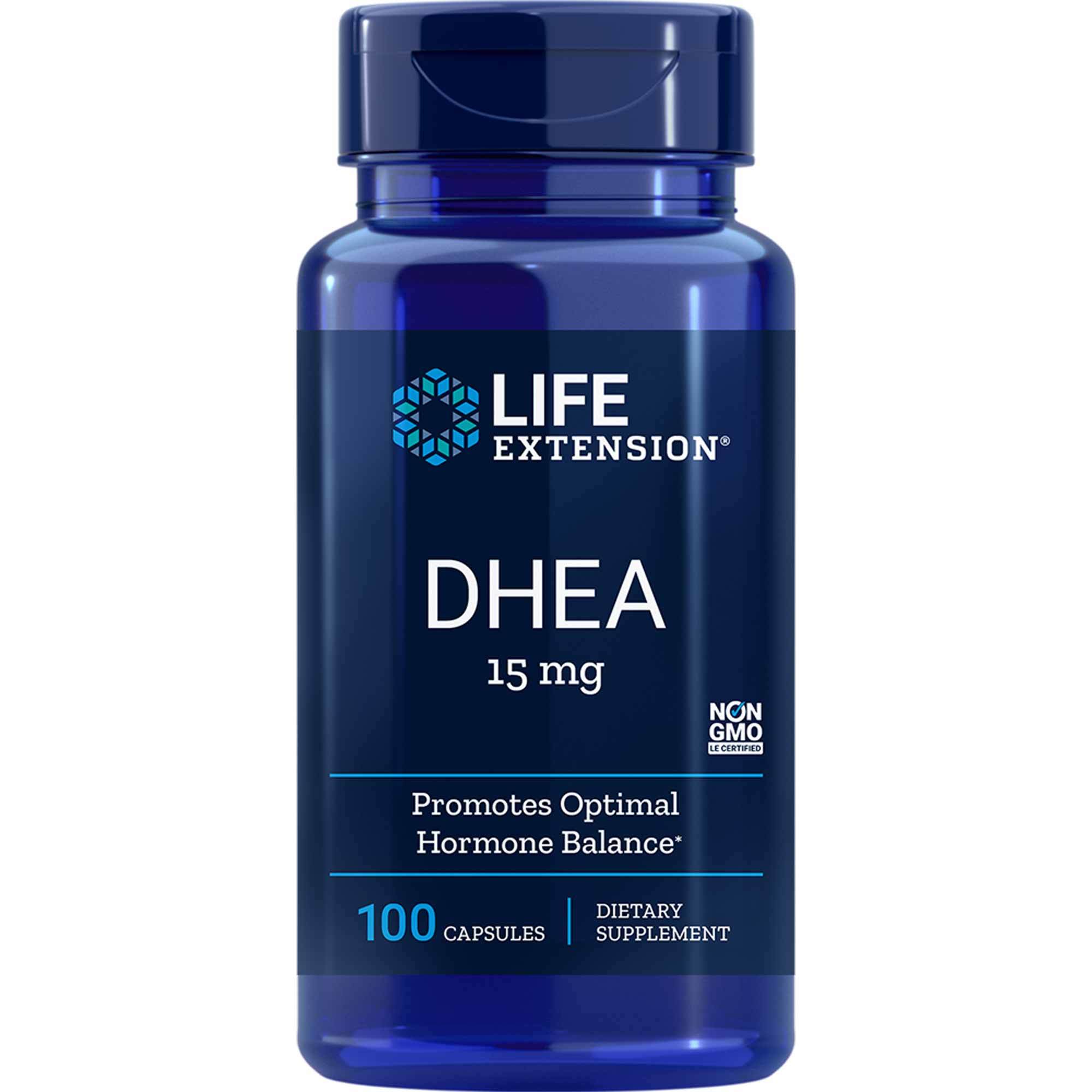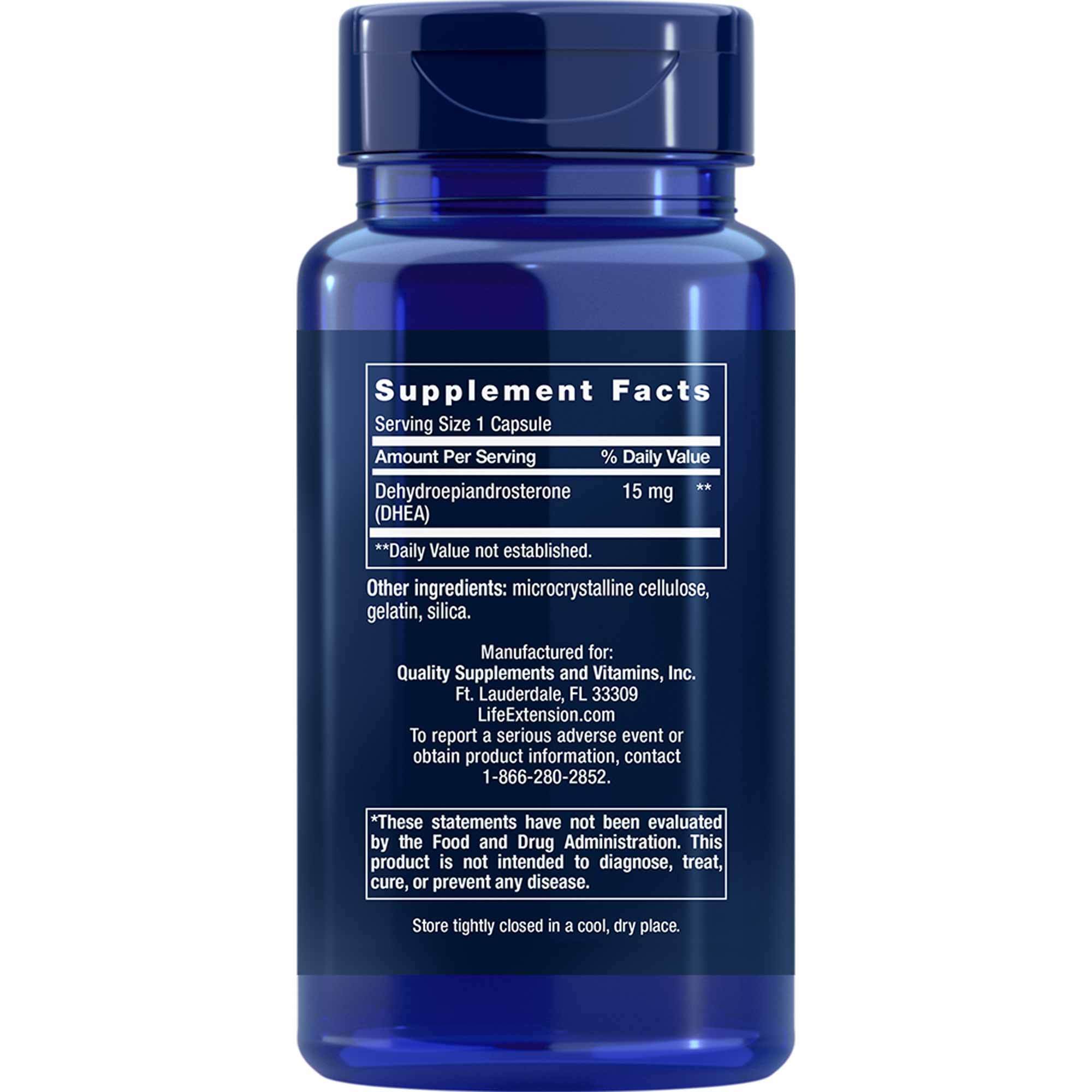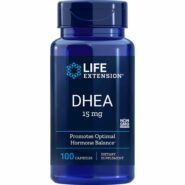- The exact number of capsules to be taken should be determined by blood testing and the advice of a physician.
- Generally, take one (1) to three (3) capsules in the morning only.
- DHEA serum blood tests are suggested 3 to 6 weeks after initiating DHEA replacement therapy to optimize individual dosing.
Serving Size: 1 capsule
Amount Per Serving
Dehydroepiandrosterone … 15mg
(DHEA)
Other Ingredients: microcrystalline cellulose, gelatin, silica.
Non-GMO








Reviews
There are no reviews yet.